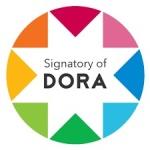Organizational Commitment as A Hard Core of Governments’ Digital Transformation: Evidence from African Social Care Services
Résumé
Organizational commitment is the hard core of the digital transformation process implementation, where digital technology investments, employee training, and employee satisfaction are the common basis. Following, this paper aims to investigate the organizational commitment of the World Bank to the digital transformation process of African social care services. Principal Component Analysis, applied on a large scale comprising 700 observations and 10 variables, aims to analyze the inter-correlation between work environment, job satisfaction, and involvement, and work-life balance aimed at increasing organizational performance. Results indicate that the World Bank is engaged in the African social care services’ digital transformation implementation by investing in digital technology infrastructure and employees’ training. In doing so, it aims to provide a great work environment, job satisfaction, and involvement, and work-life balance for employees. Results show also that organizational commitment in the digital transformation process rises organizational performance.
##plugins.generic.usageStats.downloads##
Références
ANG, J., & KOH., S. (1997). Exploring the relationships between user information satisfaction and job satisfaction. International Journal of Information Management, 17(03), 169-117.
Dittes, S., Richter, S., Richter, A., & Smolnik, S. (2019). Toward the workplace of the future: How organizations can facilitate digital work. Business Horizons(62), 649-661.
Earle, J. S., Pagano, U., & Lesi, M. (2006). Information Technology, Organizational Form, and Transition to the Market. SSRN Electronic Journal, 60(4), 471-489.
Fischer, M., Imgrund, F., Janiesch, C., & Winkelmann, A. (2020). Strategy archetypes for digital transformation: Defining meta objectives using business process management. Information & Management, 1-13.
Gong, k., Yang, J., & Shi, X. (2020). Towards a comprehensive understanding of digital transformation in government: Analysis of flexibility and enterprise architecture. Government Information Quarterly, 37( 3), 1-13.
Hanaysha, J. (2016). Examining the Effects of Employee Empowerment, Teamwork, and Employee Training on Organizational Commitment. Leadership, Technology, Innovation and Business Management (pp. 298-306). Procedia - Social and Behavioral Sciences.
Howard, M. C., Rose, J. C., Alabama, S., College, M., & States, U. (2019). Information & Management Refining and extending task – technology fit theory : Creation of two task – technology fit scales and empirical clarification of the construct. Information and Management, 56(6), 1-16. doi:https://doi.org/10.1016/j.im.2018.12.002
Lee, H., Choi, H., Lee, J., Min, J., & Lee, H. (2016). Impact of IT Investment on Firm Performance Based on Technology IT Architecture. Procedia Computer Science, 91, 652 – 661.
Martínez-Caroa, E., Cegarra-Navarrob, J. G., & Alfonso-Ruiz, F. J. (2020). Digital technologies and firm performance: The role of digital organisational culture. Technological Forecasting & Social Change(154), 1-10.
McCloskey, D. W. (2016). Finding Work-Life Balance in a Digital Age: An Exploratory Study of Boundary Flexibility and Permeability. Information Resources Management Journal, 29(3), 53-70.
Mkrttchian, V., Gamidullaeva, L., & Aleshina, E. (2019). Avatar-based model, tools, and innovation in the digital economy. USA: IGI Global.
Osmundsen, K., Iden, J., & Bygstad, B. (2019). Digital transformation: drivers, success factors, and implications. The 12th Mediterranean Conference on Information Systems, (pp. 1-15). Greece.
Pradhan, R. P., Mallik, G., & Bagchi, T. P. (2018). Information communication technology (ICT) infrastructure and economic growth: A causality evinced by cross-country panel data. IIMB Management Review(30), 91–103.
Rahimi, F., Møller, C., & Hvam, L. (2016). Business Process Management and IT Management: The Missing Integration. International Journal of Information Management, 36(1), 142-154.
Savić, D. (2019). From Digitization, through Digitalization, to Digital Transformation. Online searcher , 36-39.
Sousa, M. J., & Rocha, Á. (2019). Digital Learning: Developing Skills for Digital Transformation of Organizations. Future Generation Computer Systems, 91, 327-334.
Vial, G. (2019). Understanding digital transformation: A review and a research agenda. Journal of Strategic Information Systems, 28(2), 118–144.
Wang, W., Wang, Y., Zhang, Y., & Ma, J. (2020). Spillover of workplace IT satisfaction onto job satisfaction: The roles of job fit and professional fit. International Journal of Information Management, 50, 341–352.
Zopiatis, A., Constanti, P., & Theocharous, A. L. (2014). Job involvement, commitment, satisfaction and turnover: Evidence from hotel employees in Cyprus. Tourism Management(41), 129-140.
Copyright (c) 2021 BENKHIDER Naima, MEZIANI Mustapha, KHERBACHI Sonia

Ce travail est disponible sous licence Creative Commons Attribution - Pas d’Utilisation Commerciale 4.0 International.















